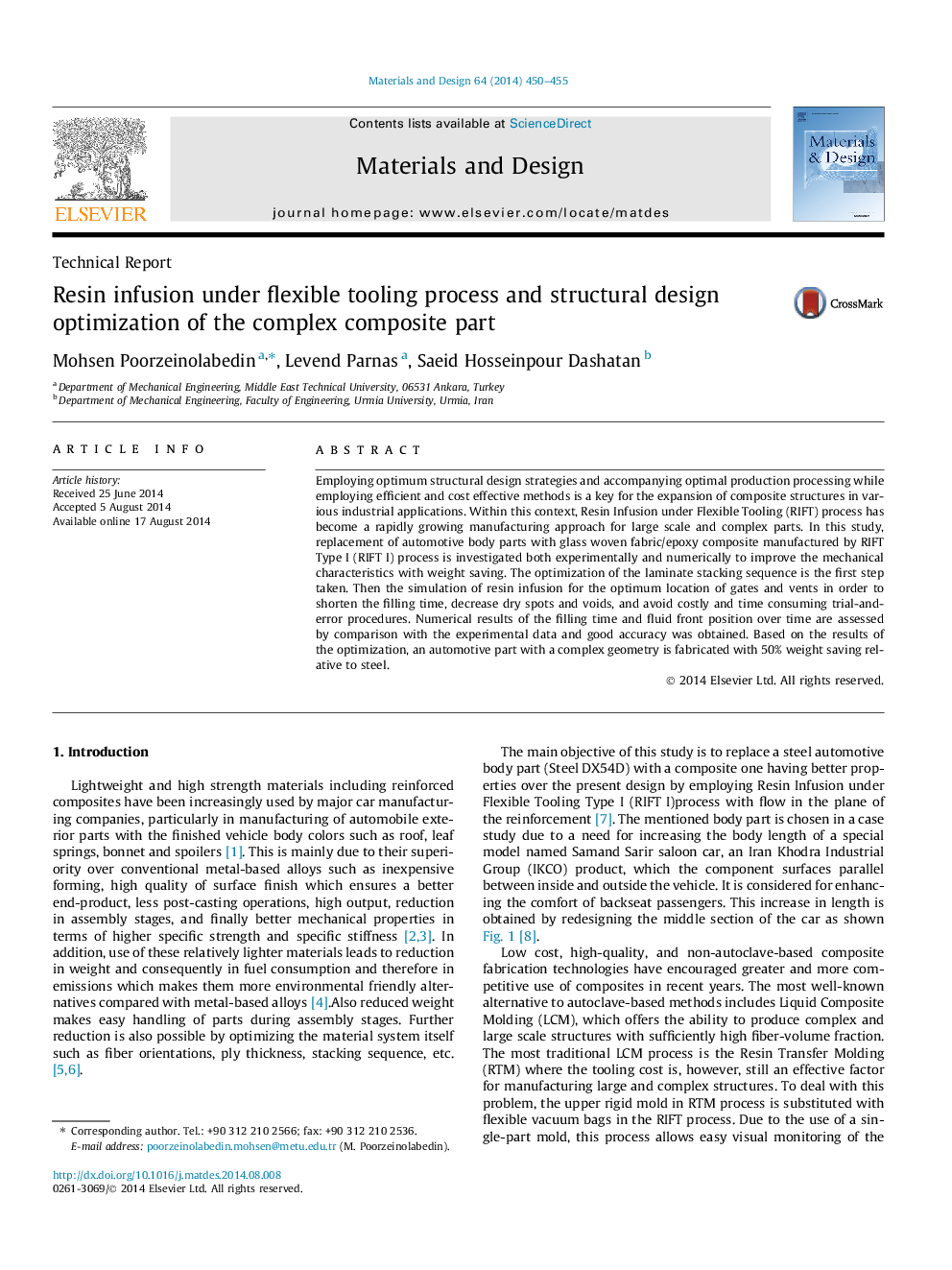| Article ID | Journal | Published Year | Pages | File Type |
|---|---|---|---|---|
| 828930 | Materials & Design (1980-2015) | 2014 | 6 Pages |
•Structural optimization of laminate for minimum weight was considered.•Resin flow simulation was done to obtain the gate and vent locations.•RIFT I process was applied to manufacture the composite part prototype.•The prototyped part showed significant weight reduction respect to steel one.
Employing optimum structural design strategies and accompanying optimal production processing while employing efficient and cost effective methods is a key for the expansion of composite structures in various industrial applications. Within this context, Resin Infusion under Flexible Tooling (RIFT) process has become a rapidly growing manufacturing approach for large scale and complex parts. In this study, replacement of automotive body parts with glass woven fabric/epoxy composite manufactured by RIFT Type I (RIFT I) process is investigated both experimentally and numerically to improve the mechanical characteristics with weight saving. The optimization of the laminate stacking sequence is the first step taken. Then the simulation of resin infusion for the optimum location of gates and vents in order to shorten the filling time, decrease dry spots and voids, and avoid costly and time consuming trial-and-error procedures. Numerical results of the filling time and fluid front position over time are assessed by comparison with the experimental data and good accuracy was obtained. Based on the results of the optimization, an automotive part with a complex geometry is fabricated with 50% weight saving relative to steel.
